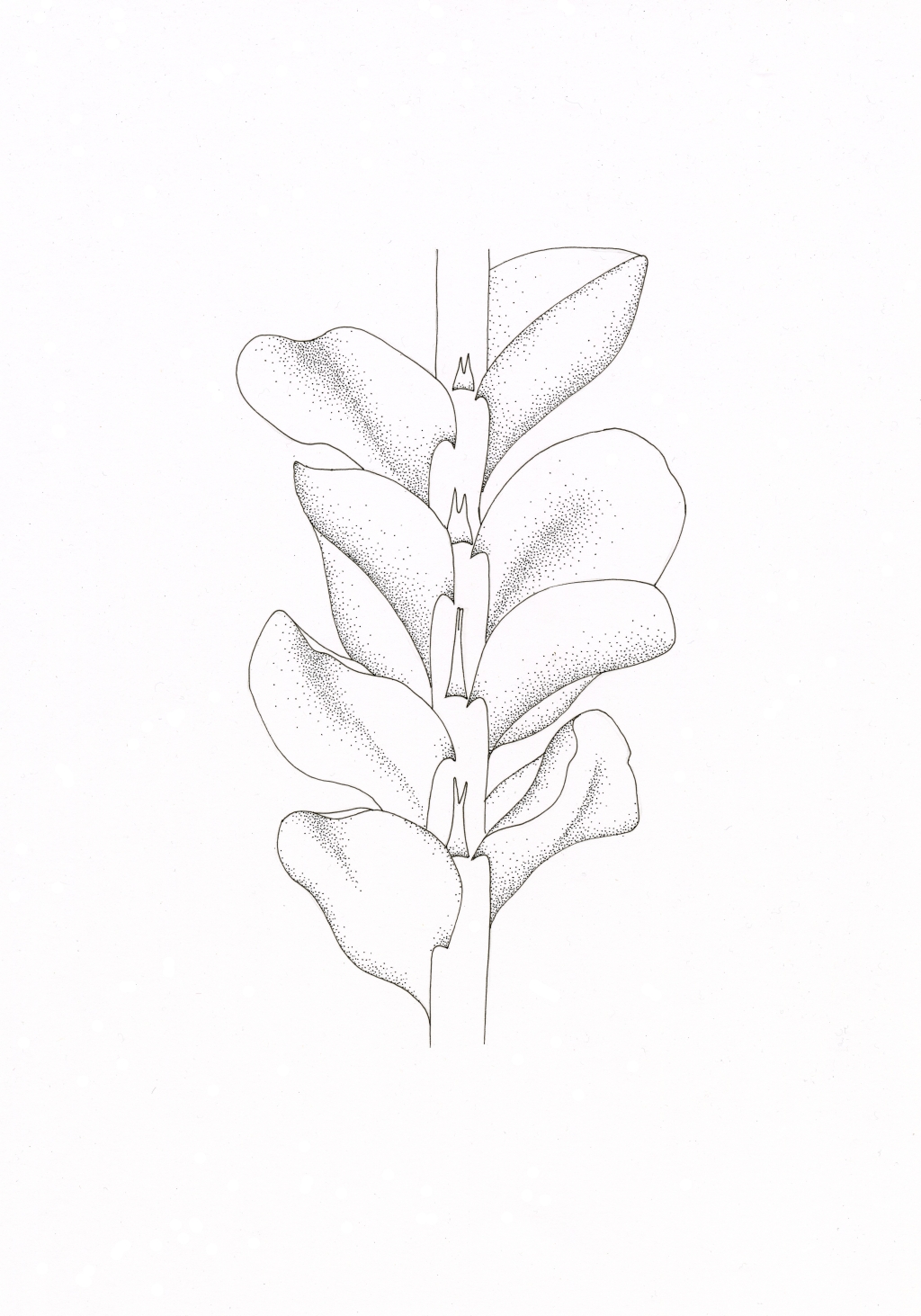Hepatostolonophora
Lithophytic, closely associated with streams and often inundated, dioicous. Asexual reproduction absent. Stems differentiated into prostrate microphyllous stolons and erect leafy stems; branches mostly emerging from main stem near the axils of lateral leaves or underleaves and with a collar of tissue at base, rarely emerging from main stem near and abaxial to a lateral leaf without a collar of tissue at its base. Lateral leaves ovate (not in Victoria) to orbicular, symmetric (not in Victoria) or slightly asymmetric from decurrency, unlobed and entire, alternate, concave adaxially, with transverse to succubous insertion, extending to stem midline adaxially, distant to imbricate. Underleaves unlobed and triangular, or bilobed with two filiform to triangular lobes, lobes and margins below lobes entire or with small teeth, minute, much narrower than stem, free from lateral leaves or weakly connate to lateral leaves on one side, distant, appressed to stem, caducous toward base of leafy stems. Leaf cells mostly hexagonal or pentagonal, smooth, thin- or firm-walled (not in Victoria), with (not in Victoria) or without distinct trigones, with 0–4 finely granular or botryoidal globular to ovoid or ellipsoid oil bodies. Androecia on main stem or long leafy branches. Perianth terminal on main stem, on long branches emerging from lateral leaves (not in Victoria) or underleaves (not in Victoria), or on short branches emerging from underleaves, trigonous, linear-elliptic to obovoid (not in Victoria) or clavate (not in Victoria), without teeth.
Four species, two in southern South America and two in New Zealand and south-east Australia (Engel & Glenny 2019); one species, H. paucistipula (Rodway) J.J.Engel, in Victoria.
Engel, J.J. & Glenny, D. (2019). A Flora of the Liverworts and Hornworts of New Zealand, volume 2. Missouri Botanical Garden Press: St Louis.
 Spinning
Spinning